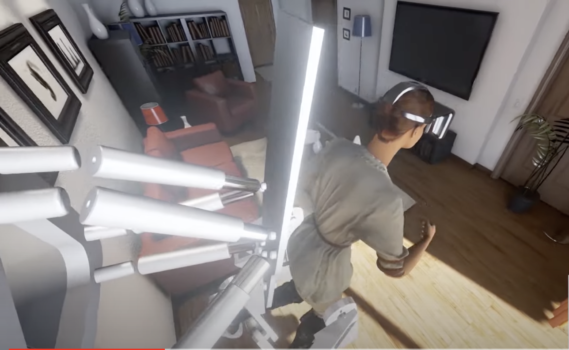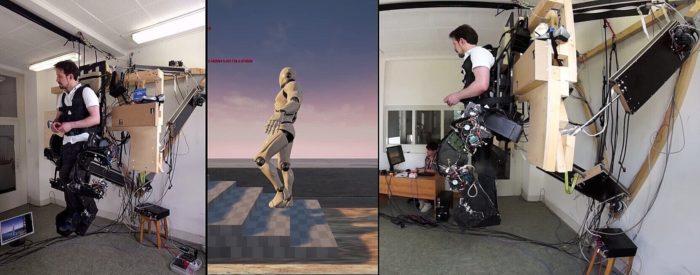
You can already see and hear in a virtual environment using a device like the Oculus Quest 2.
There could be a device in the not too distant future that lets you feel like you’re actually moving around in VR too — and one man is starting to build it.
The Holotron, developed by physicist Marcel Reese, is a robotic exoskeleton prototype that’s suspended above the ground.
It lets you walk, run, and interact with your environment in virtual reality.
If you’re walking up a flight of steps, it will feel like it. If you knock into an object, the device provides tactile feedback as if you actually walked into a wall, a rock, or another obstacle.

The current design has two motors for each leg and nothing yet for the arms, but that’s just the beginning, the company says. A future version will work with the full body including back, arms, and hands, and will let you rotate on any axis. This means you’ll be able to walk up walls or hang upside down on the ceiling if that’s your thing.
Here’s a cool video that shows you what it can do:
You can see the wearer shaking around in a skateboarding demo.
There’s even a simulation that shows the user moving at a fraction of Earth gravity, which means the device is already able to simulate some far-out environments, like Mars or the moon. Other possible applications include controlling telerobots for use in dangerous environments like mining, deep sea work, fire fighting, toxic chemical removal and even construction work on other planets. It can also be used for virtual training for dangerous jobs, and, of course, for entertainment.
Too early to tell
The Holotron looks rough at the moment. It was made as cheaply as possible without compromising performance, according to Reese. Â The device is made mostly of wood, including the exoskeleton. The actuators are self-made to be cheap and strong.
This is only a protoype though, and the device is years away from any kind of consumer model.
